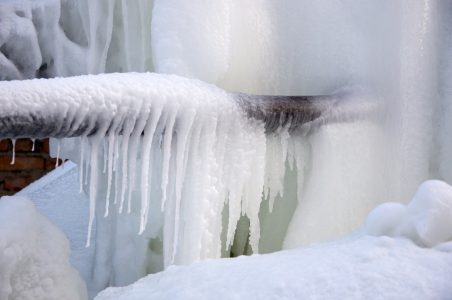In this article underneath you might get some reliable information pertaining to How to Prevent Your Pipes From Freezing.

Cold weather can ruin your plumbing, especially by freezing pipelines. Below's how to avoid it from happening and what to do if it does.
Introduction
As temperatures drop, the risk of frozen pipes increases, potentially leading to costly repair work and water damage. Recognizing exactly how to avoid icy pipes is critical for house owners in cold climates.
Avoidance Tips
Insulating at risk pipes
Cover pipelines in insulation sleeves or utilize warm tape to shield them from freezing temperatures. Concentrate on pipelines in unheated or external areas of the home.
Heating strategies
Maintain interior rooms properly heated, particularly locations with pipes. Open up cabinet doors to allow warm air to distribute around pipes under sinks.
Just how to recognize icy pipelines
Seek decreased water flow from taps, uncommon odors or sounds from pipelines, and visible frost on exposed pipelines.
Long-Term Solutions
Architectural changes
Consider rerouting pipes away from exterior walls or unheated locations. Include added insulation to attic rooms, cellars, and crawl spaces.
Updating insulation
Buy top notch insulation for pipes, attic rooms, and wall surfaces. Correct insulation aids maintain constant temperature levels and minimizes the risk of frozen pipelines.
Shielding Outdoor Plumbing
Garden pipes and exterior faucets
Detach and drain garden hoses prior to wintertime. Mount frost-proof faucets or cover outside faucets with shielded caps.
Understanding Icy Pipelines
What triggers pipelines to ice up?
Pipelines ice up when subjected to temperatures listed below 32 ° F (0 ° C) for prolonged periods. As water inside the pipes freezes, it increases, putting pressure on the pipeline walls and possibly causing them to burst.
Dangers and damages
Frozen pipelines can cause water supply interruptions, residential property damages, and expensive fixings. Burst pipes can flooding homes and cause comprehensive architectural damage.
Indicators of Frozen Piping
Determining frozen pipes early can avoid them from rupturing.
What to Do If Your Pipes Freeze
Immediate activities to take
If you presume frozen pipelines, maintain faucets available to relieve stress as the ice melts. Use a hairdryer or towels soaked in warm water to thaw pipes slowly.
Final thought
Avoiding icy pipelines calls for proactive actions and quick reactions. By recognizing the reasons, indications, and safety nets, home owners can secure their plumbing throughout cold weather.
6 Proven Ways to Prevent Frozen Pipes and Protect Your Home
Disconnect and Drain Garden Hoses
Before winter arrives, start by disconnecting your garden hoses and draining any remaining water. Close the shut-off valves that supply outdoor hose bibs and leave the outdoor faucet open to allow any residual water to drain. For extra protection, consider using faucet covers throughout the colder months. It’s also important to drain water from any sprinkler supply lines following the manufacturer’s directions.
Insulate Exposed Pipes
Insulating your pipes is an effective way to prevent freezing. Pipe insulation is readily available at home improvement stores and is relatively inexpensive. Pay close attention to pipes in unheated areas such as the attic, basement, crawl spaces, or garage. Apply foam insulation generously to create a buffer against the cold. You can also wrap your pipes in heat tape or thermostat-controlled heat cables for added warmth.
Seal Air Leaks
Inspect your home for any cracks or openings that could let in cold air. Seal any holes around the piping in interior or exterior walls, as well as the sill plates where your home rests on its foundation. Additionally, make sure to keep your garage door closed unless you’re entering or exiting. Leaving it open creates a significant air leak that can lead to frozen pipes.
Allow Warm Air Circulation
During cold snaps, it’s essential to allow warm air to circulate evenly throughout your home. Leave interior doors ajar to promote better airflow. Open kitchen and bathroom cabinets to help distribute heat consistently around the rooms. If you have small children or pets, be sure to remove any household chemicals or potentially harmful cleaners from open cabinets for safety.
Let Faucets Drip
A small trickle of water can make a big difference in preventing ice formation inside your pipes. When temperatures drop significantly, start a drip of water from all faucets served by exposed pipes. This continuous flow helps prevent the water from freezing. Additionally, running a few faucets slightly can relieve pressure inside the pipes, reducing the chances of a rupture if the water inside does freeze.
https://choateshvac.com/6-proven-ways-to-prevent-frozen-pipes-and-protect-your-home/

I have been very excited about Winter Plumbing Precautions: Preventing Frozen Pipes and I hope you appreciated the entire entry. Appreciated our write up? Please quickly share it. Let somebody else find it. Thank you for your time. Come back soon.
Get Quote